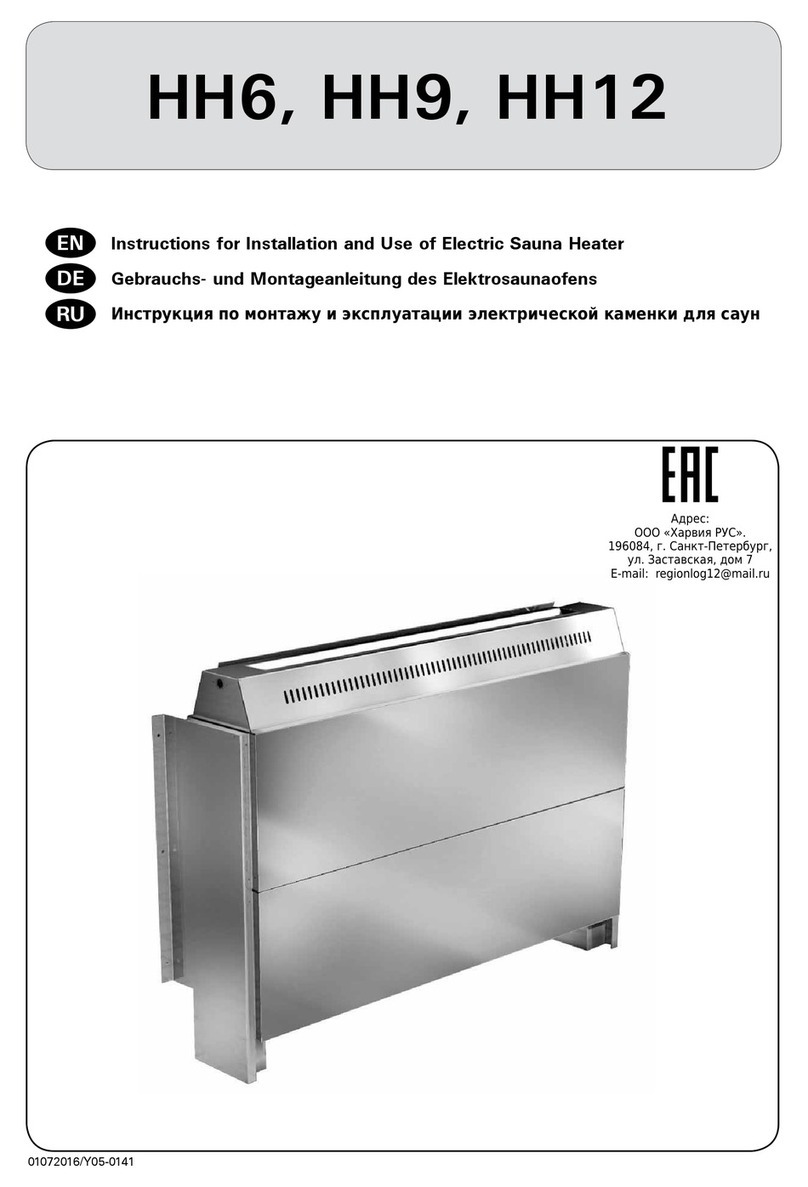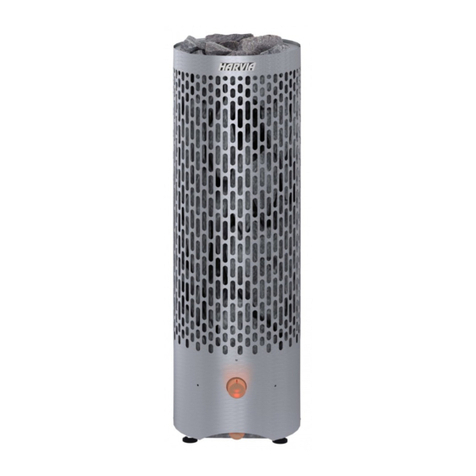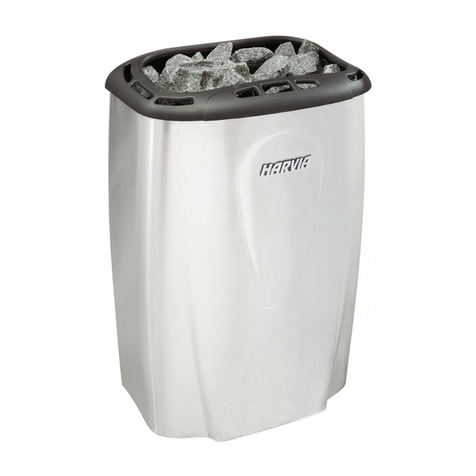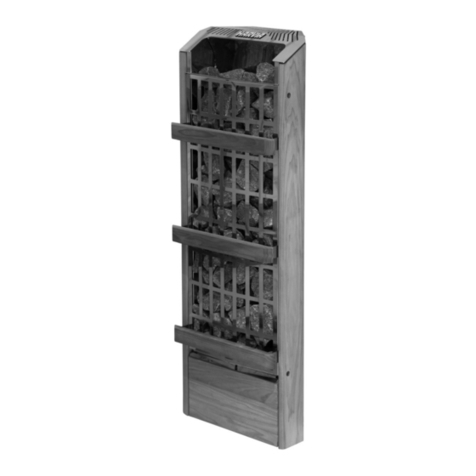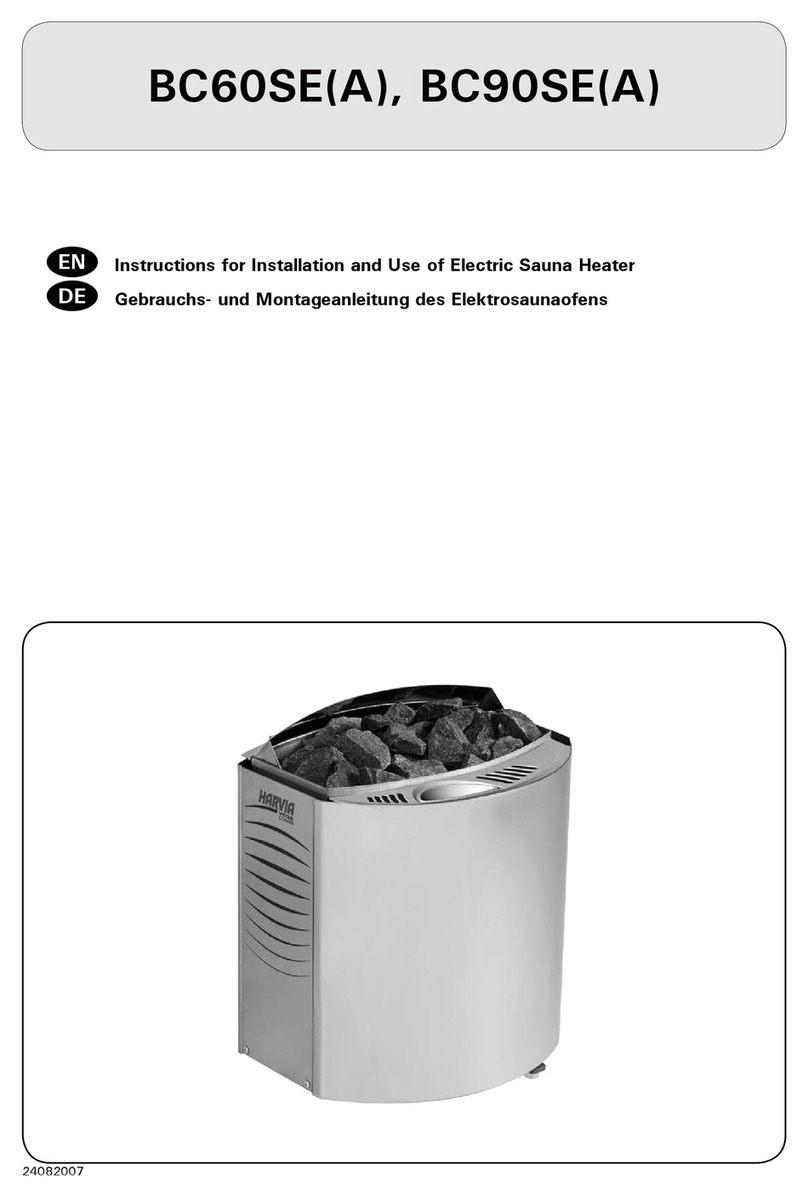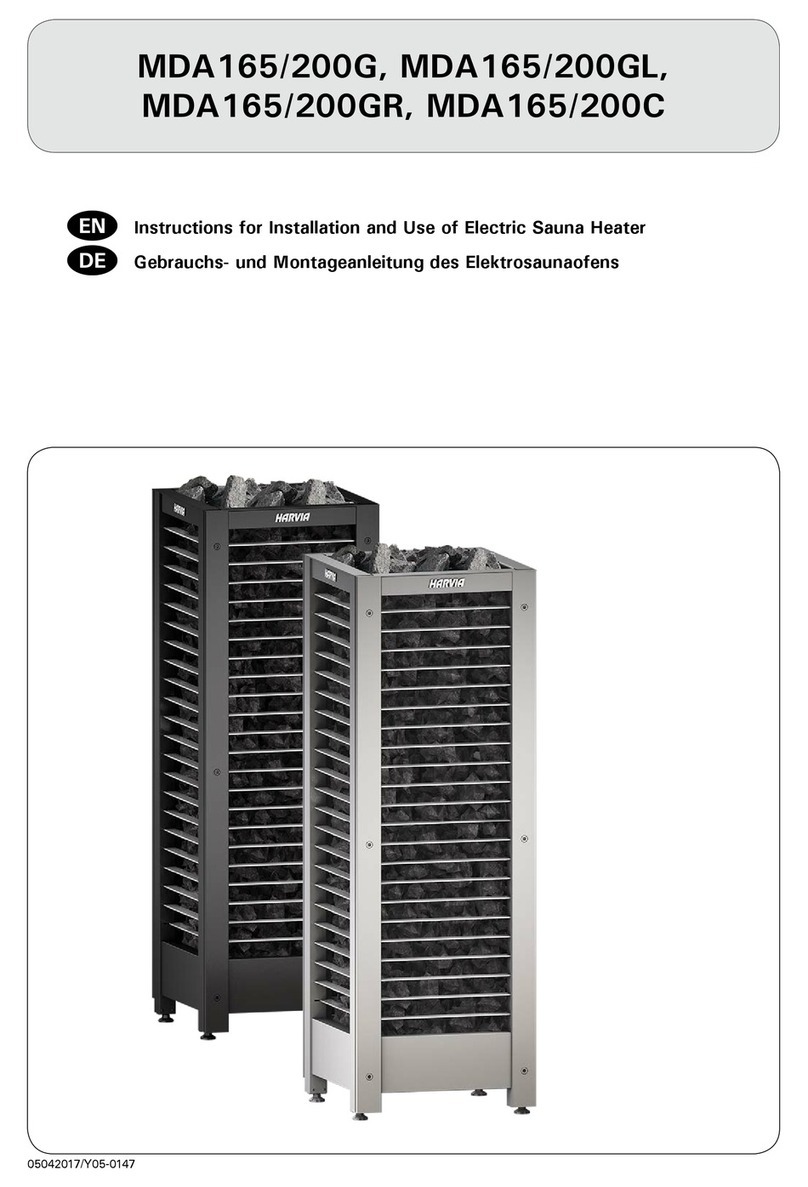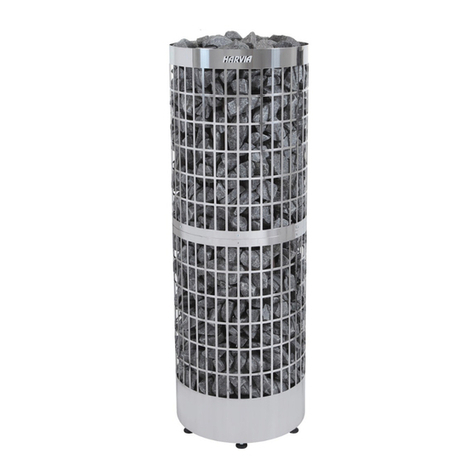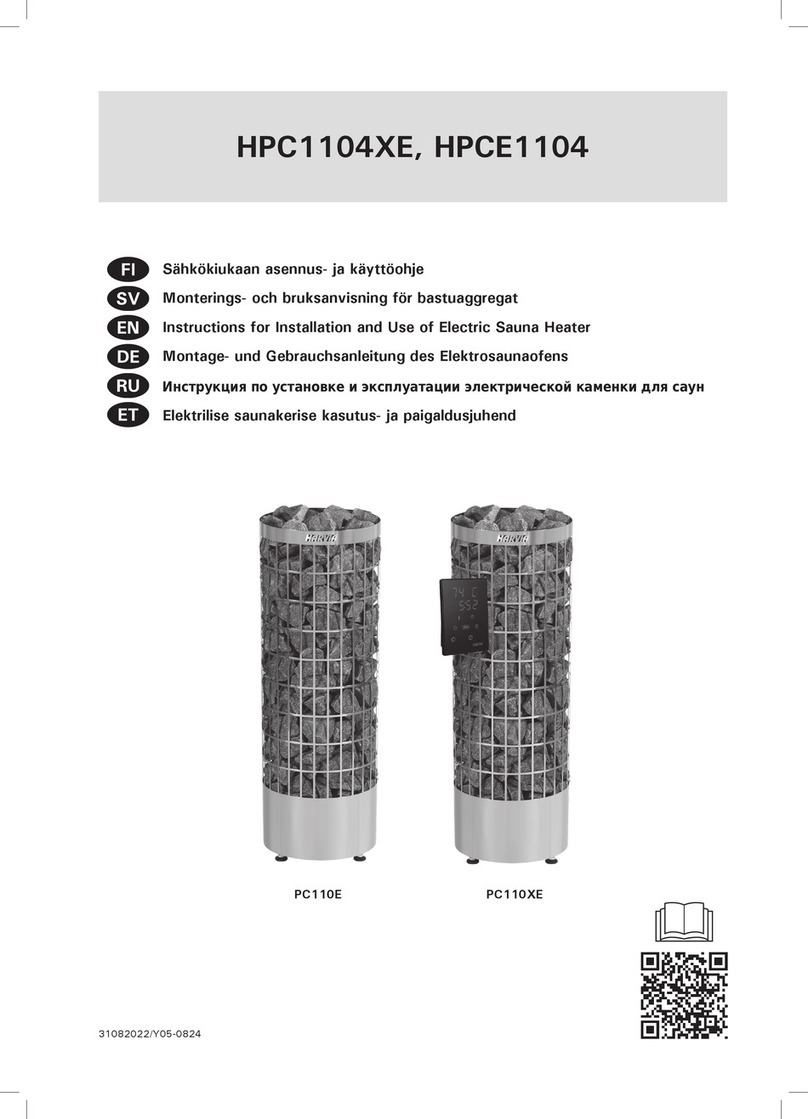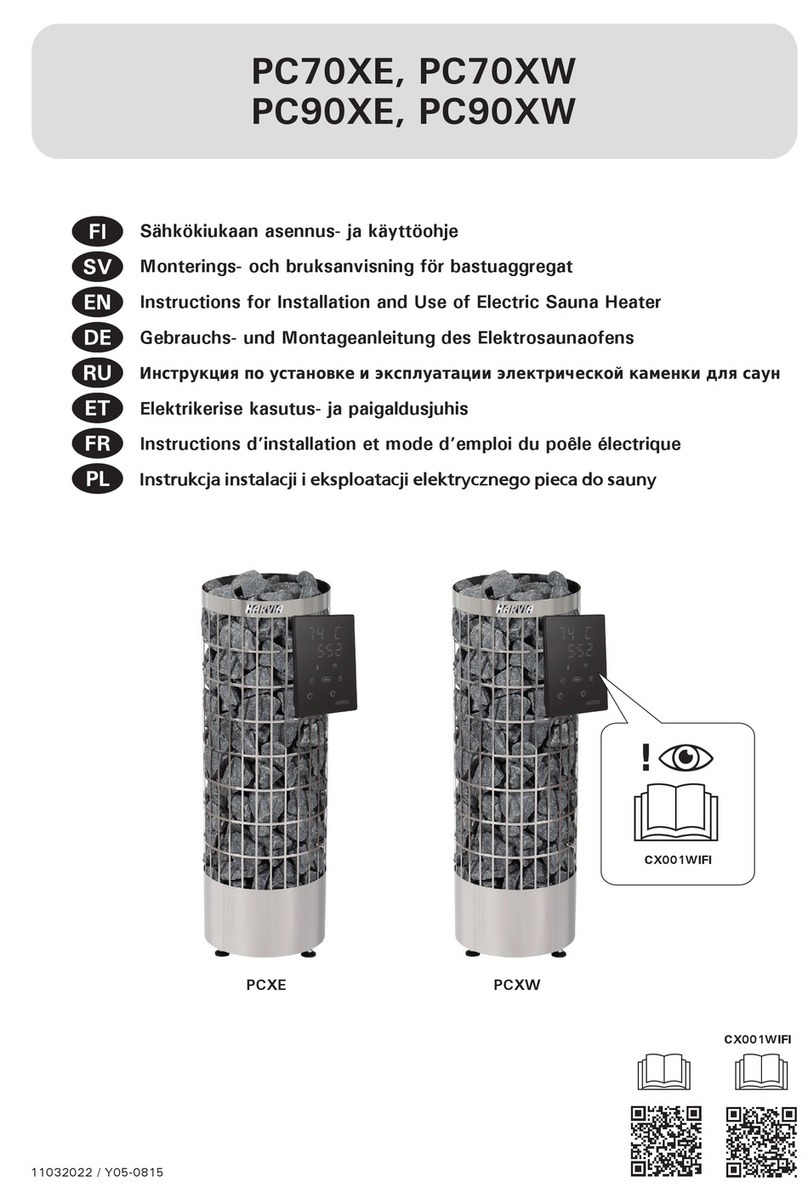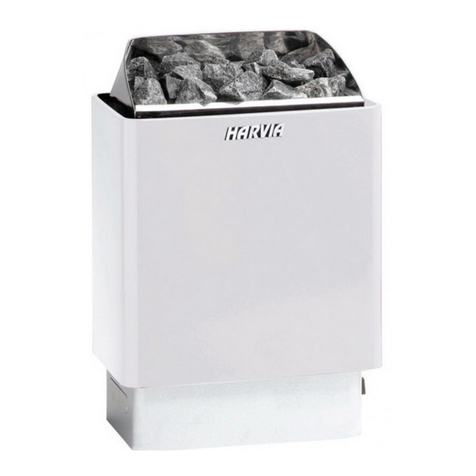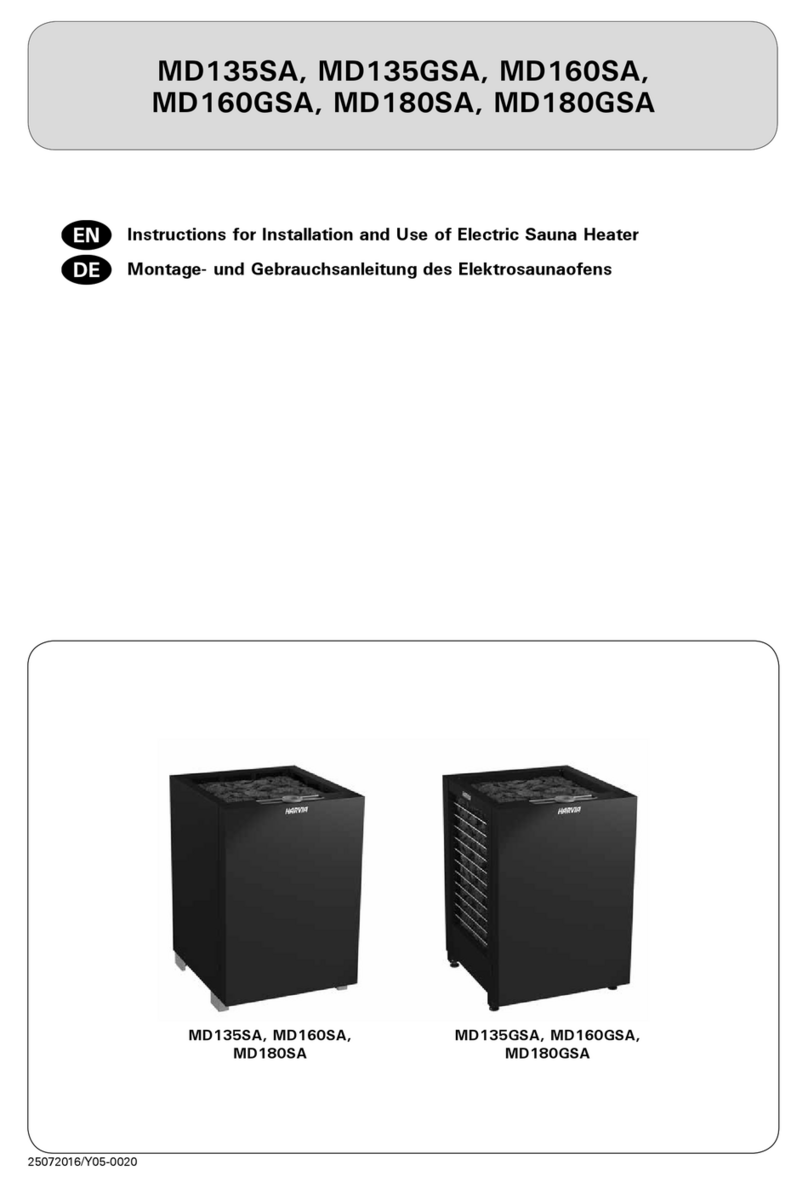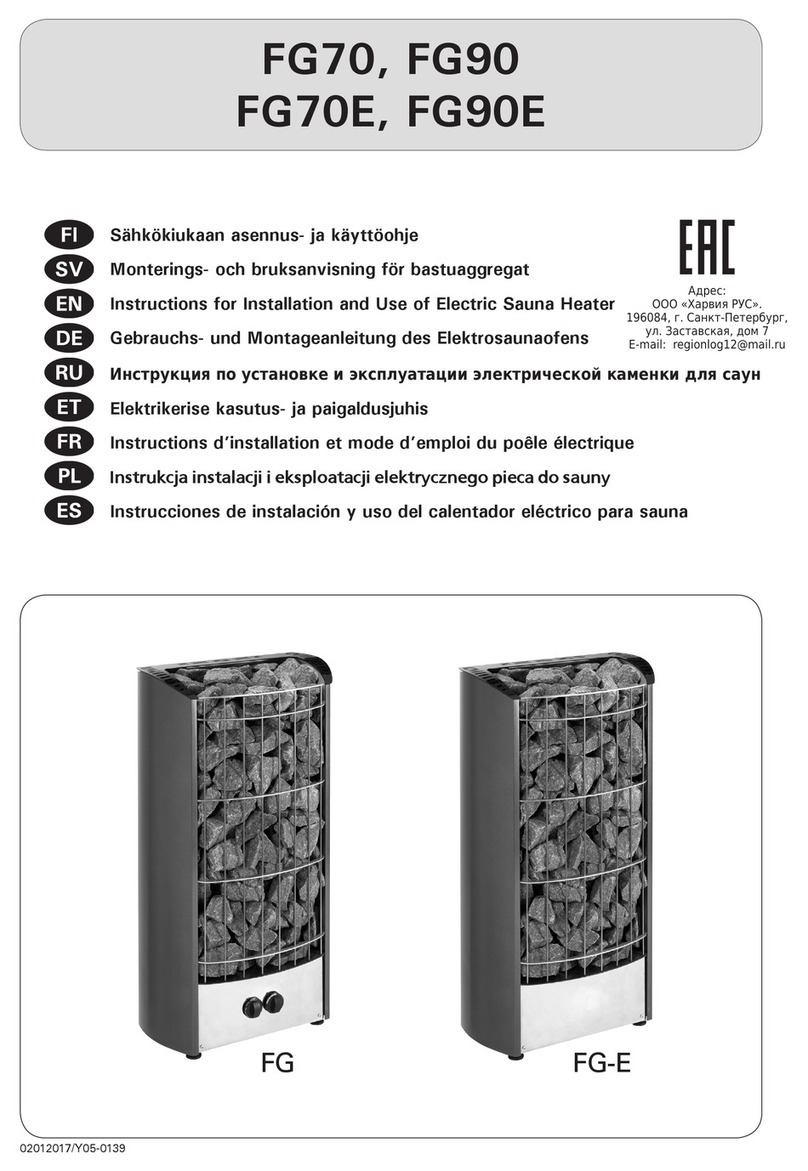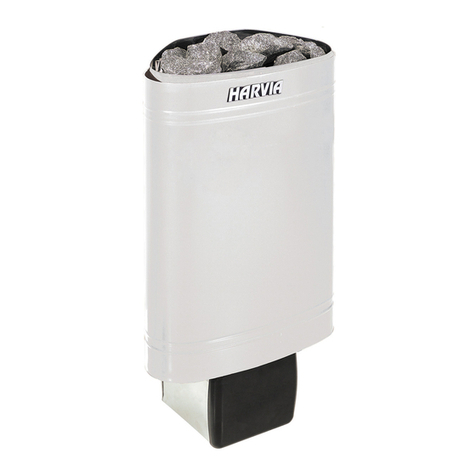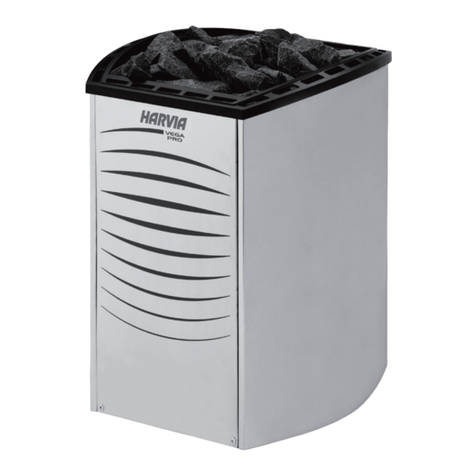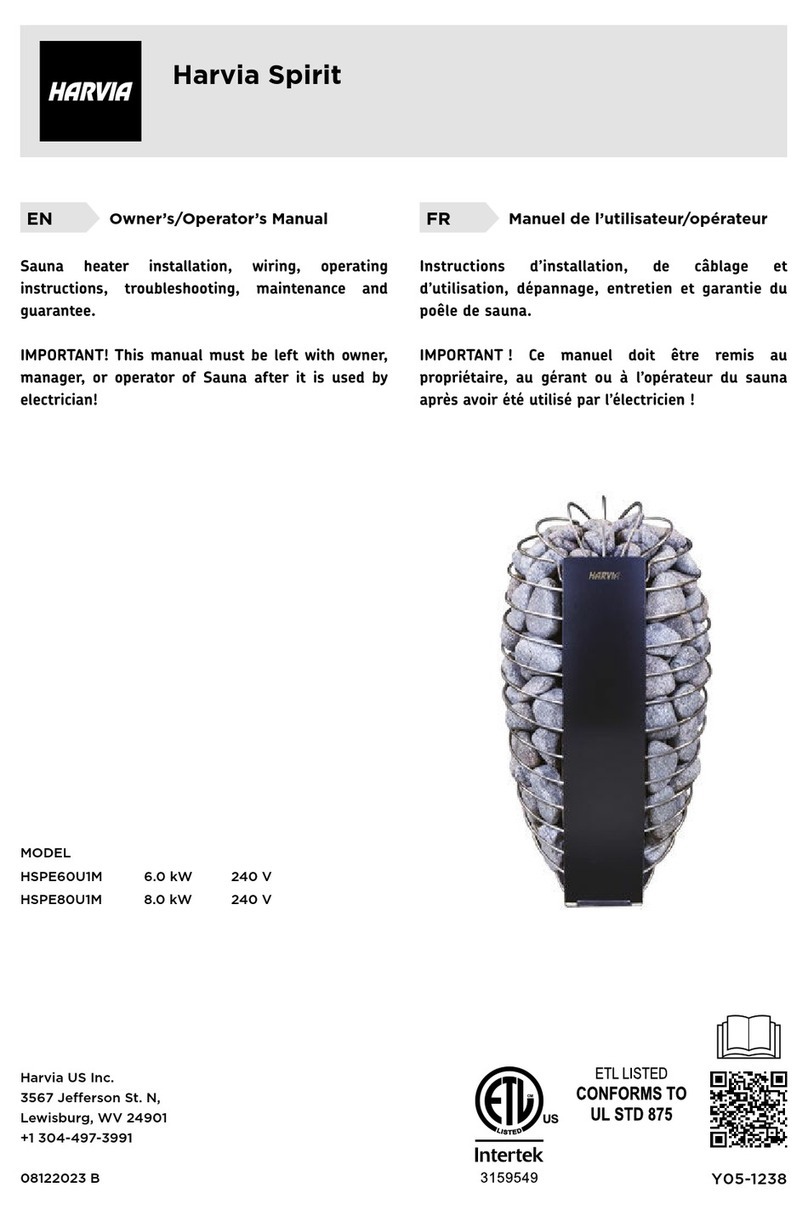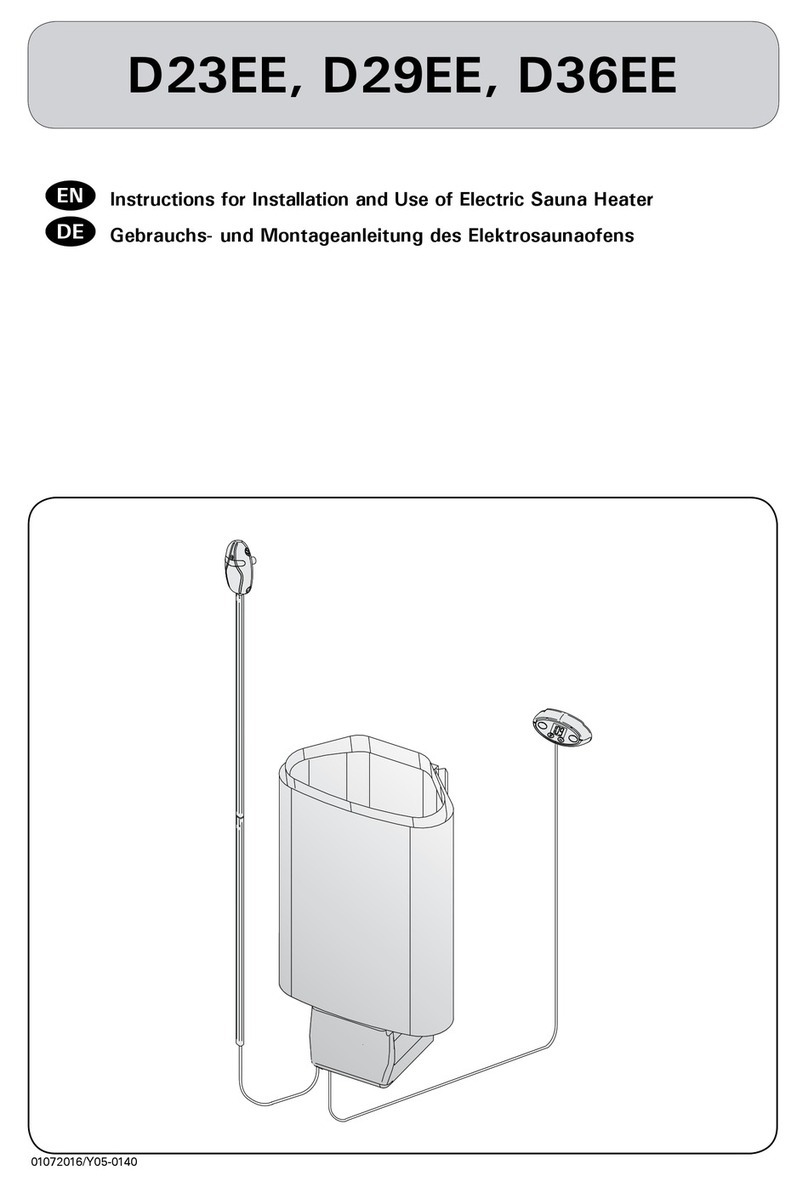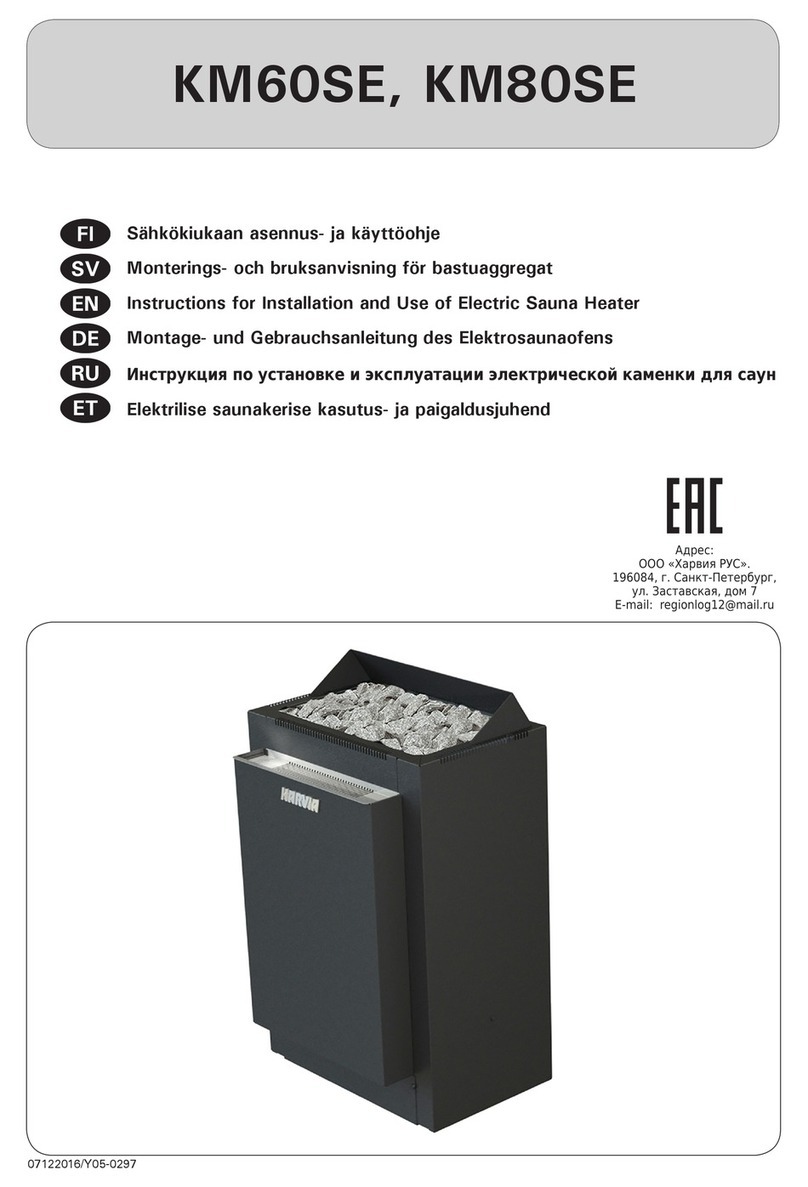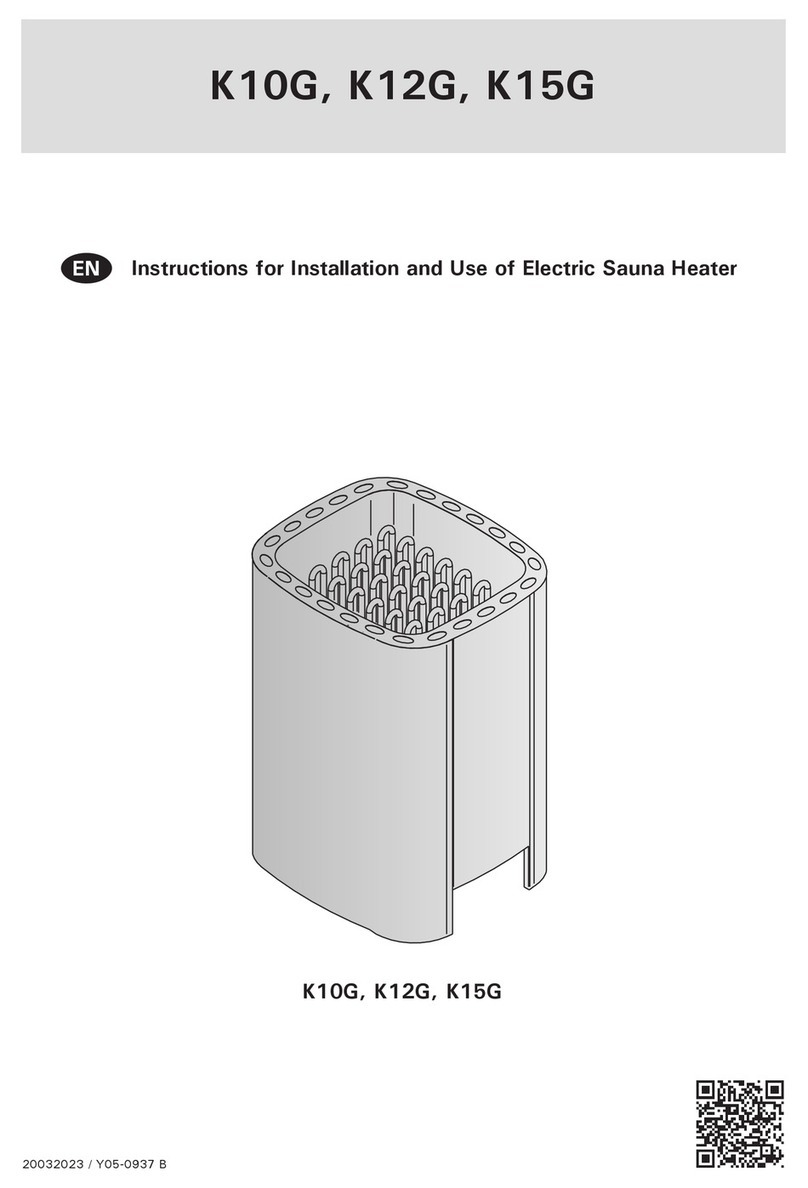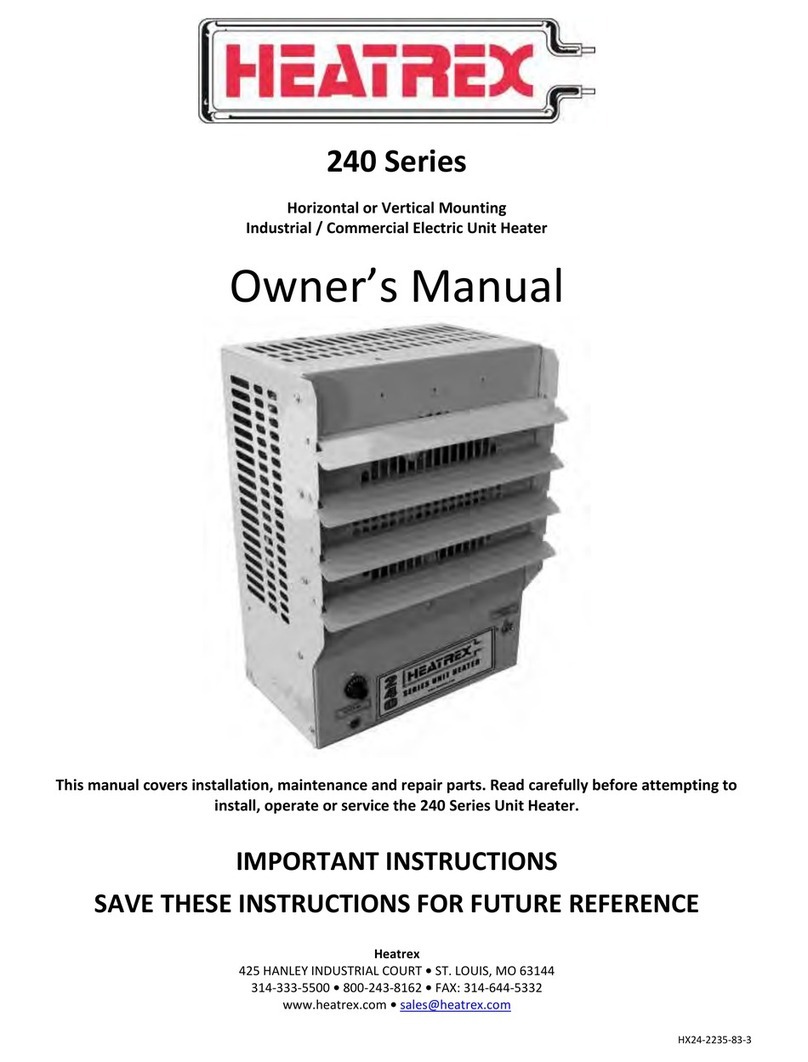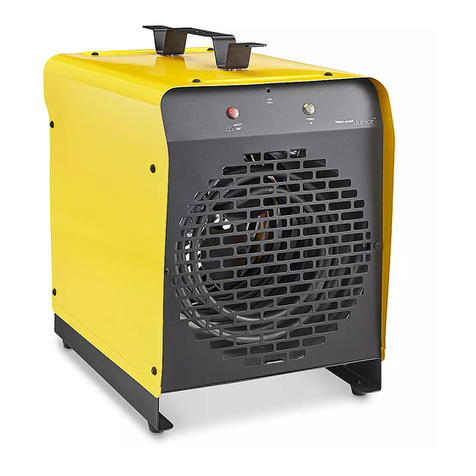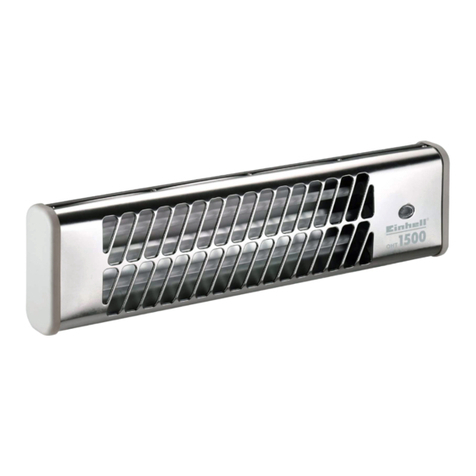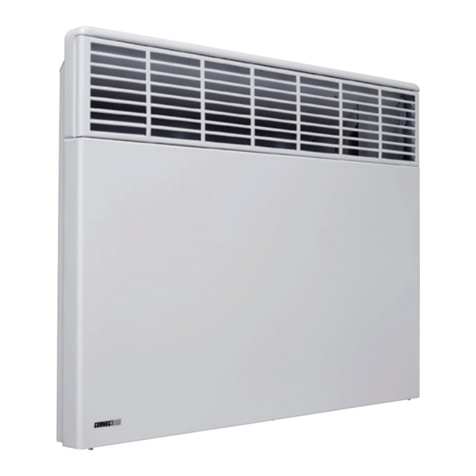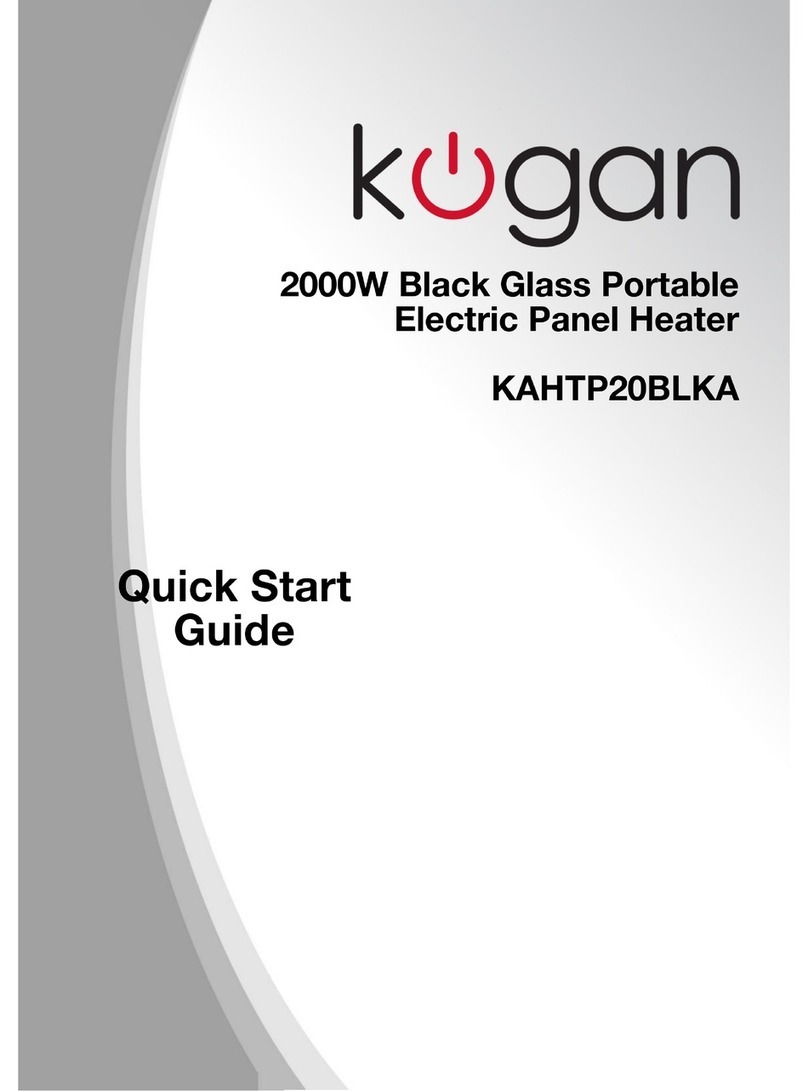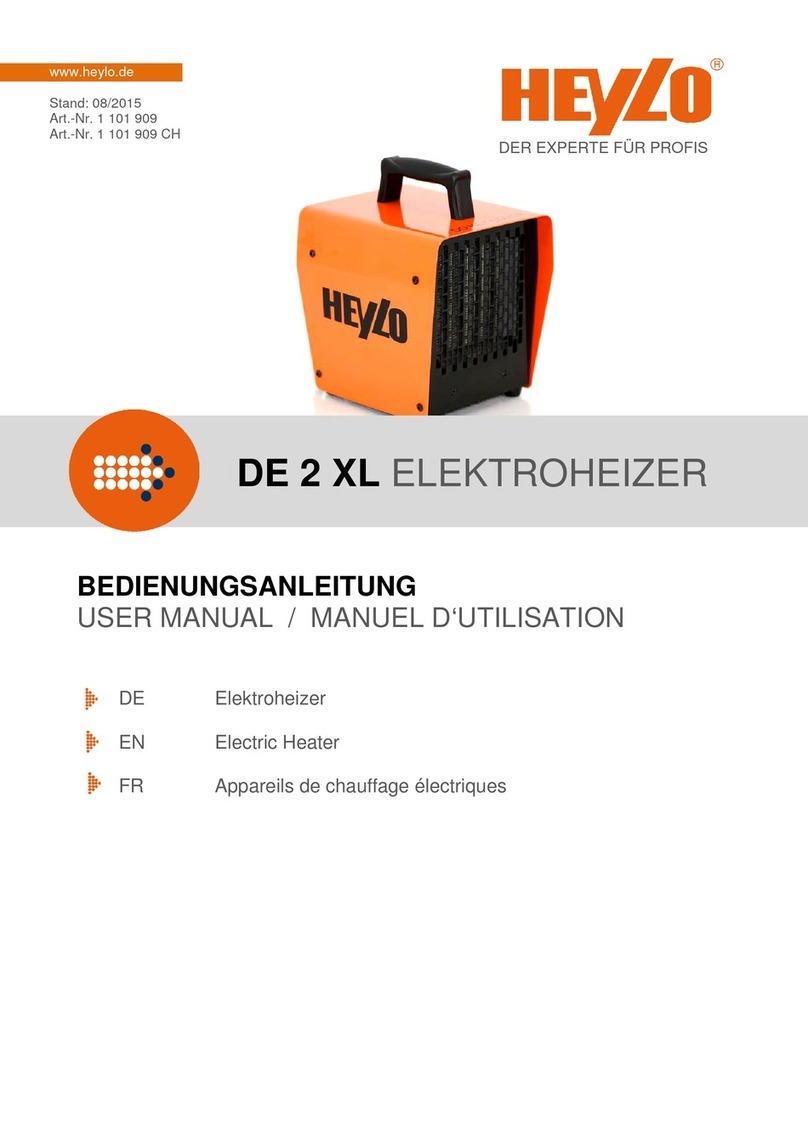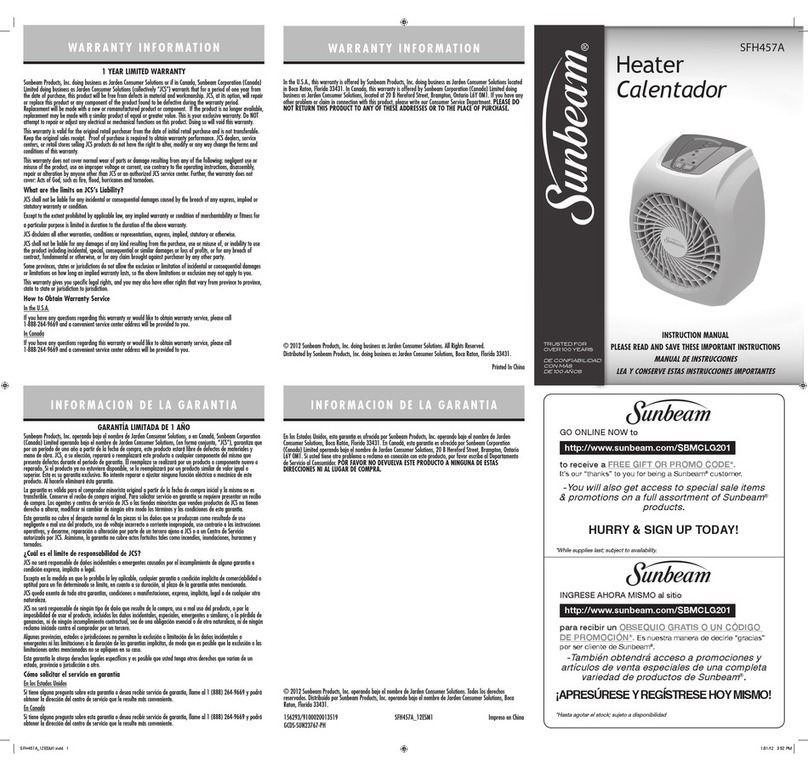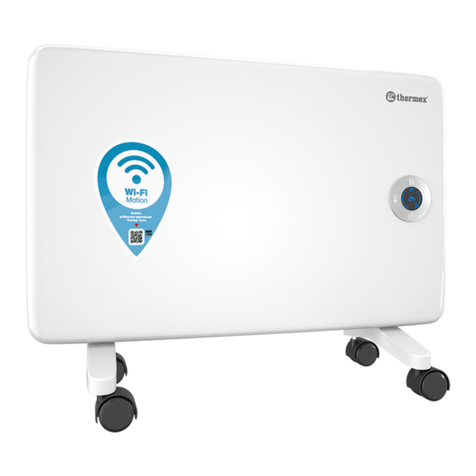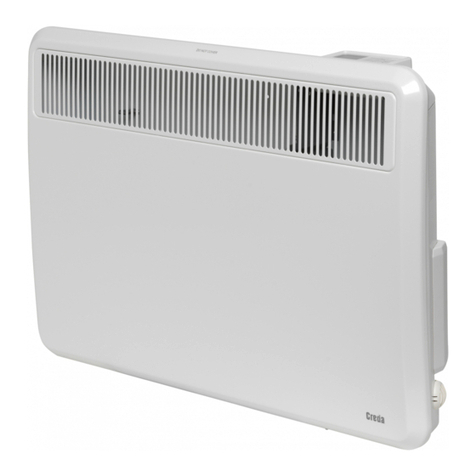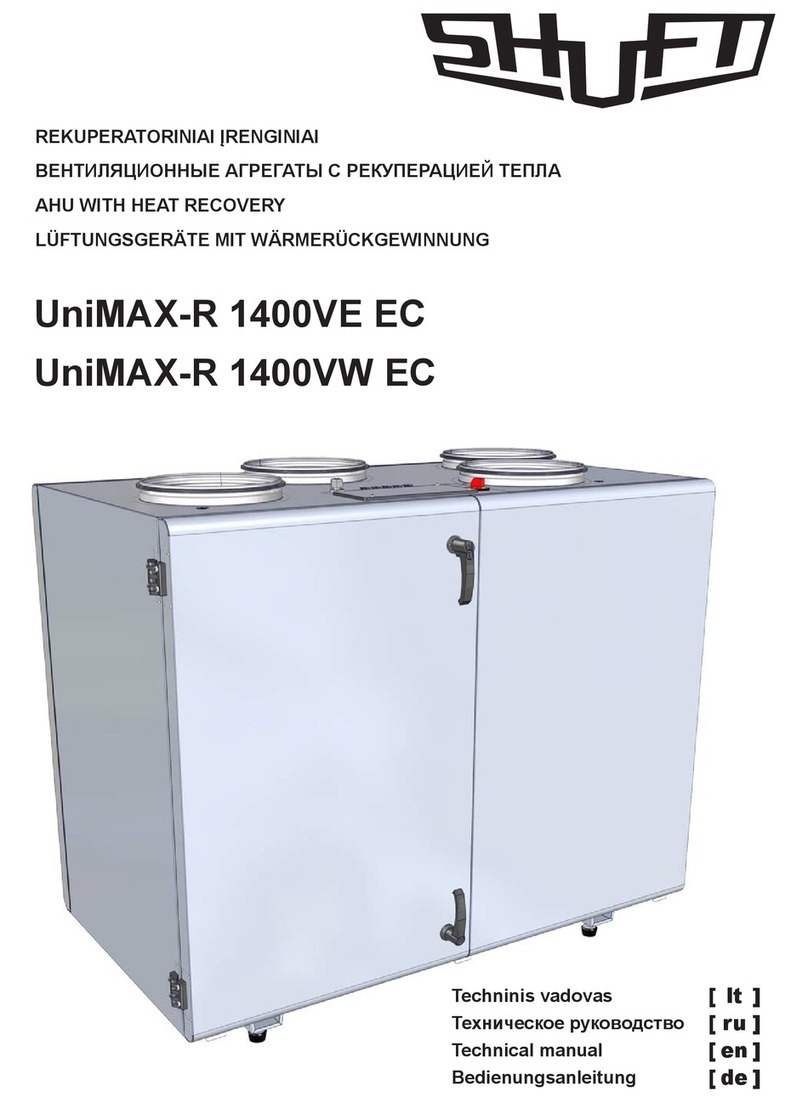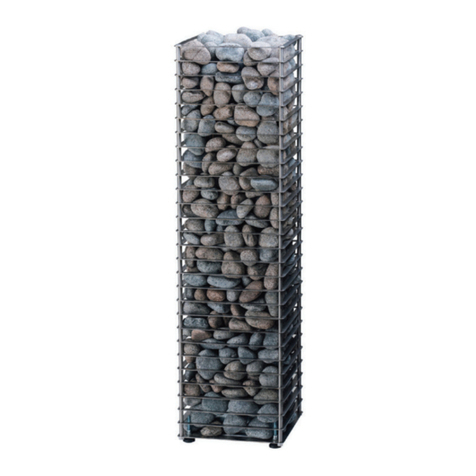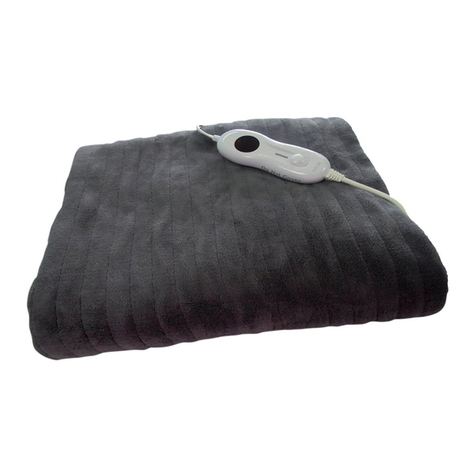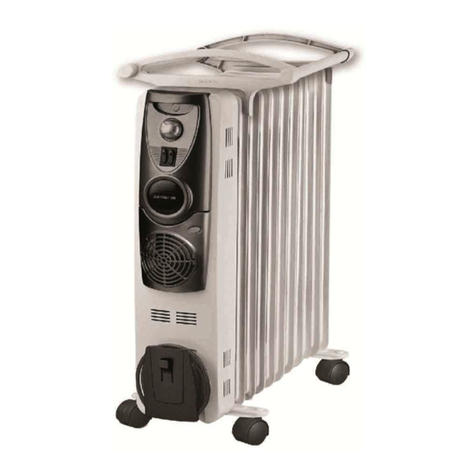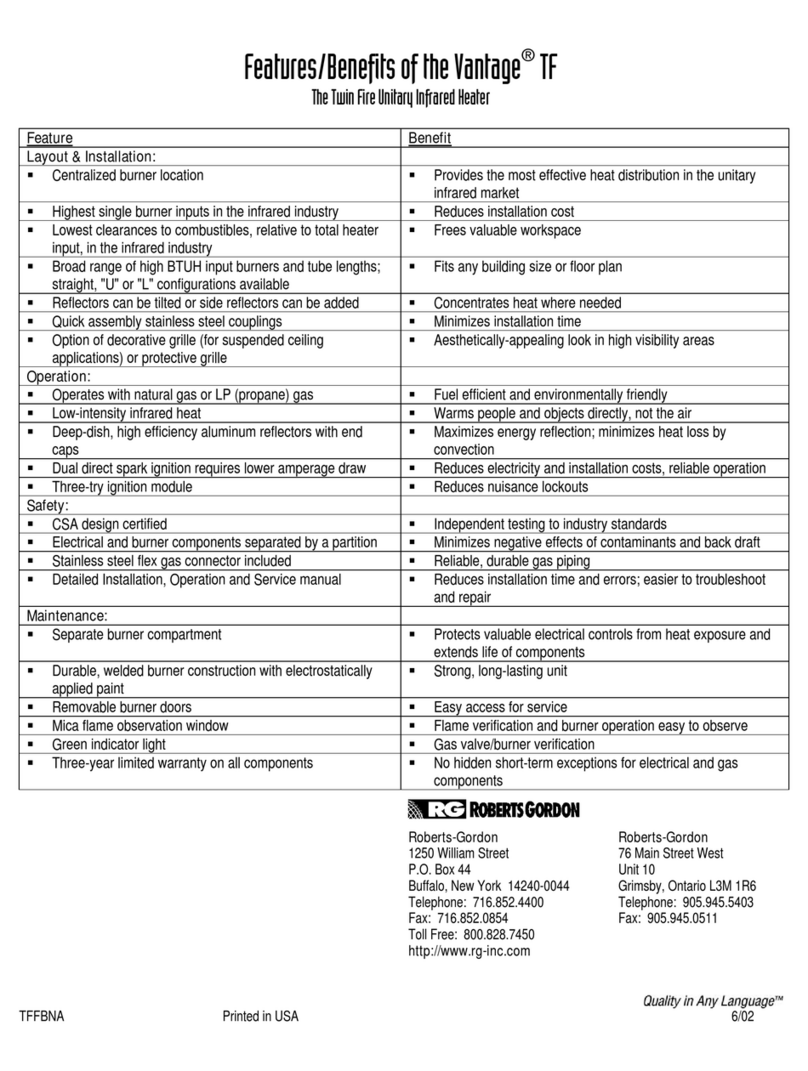
EN
4
1.3. Instructions for Bathing
• Begin by washing yourself.
• Stay in the sauna for as long as you feel
comfortable.
• Forget all your troubles and relax.
• According to established sauna conventions,
you must not disturb other bathers by speaking
in a loud voice.
• Do not force other bathers from the sauna by
throwing excessive amounts of water on the
stones.
• Cool your skin down as necessary. If you
are in good health, you can have a swim if a
swimming place or pool is available.
• Wash yourself after bathing.
• Rest for a while and let your pulse go back to
normal. Have a drink of fresh water or a soft
drink to bring your fluid balance back to normal.
1.4. Warnings
• Staying in the hot sauna for long periods of
time makes the body temperature rise, which
may be dangerous.
• Keep away from the heater when it is hot. The
stones and outer surface of the heater may
burn your skin.
• Keep children away from the heater.
• Do not let young, handicapped or ill people
bathe in the sauna on their own.
• Consult your doctor about any health-related
limitations to bathing.
• Consult your child welfare clinic about taking
little babies to the sauna.
• Be very careful when moving in the sauna, as
the platform and floors may be slippery.
• Never go to a hot sauna if you have taken
alcohol, strong medicines or narcotics.
• Never sleep in a hot sauna.
• Sea air and a humid climate may corrode the
metal surfaces of the heater.
• Do not hang clothes to dry in the sauna, as this may
cause a risk of fire. Excessive moisture content may
also cause damage to the electrical equipment.
1.4.1. Symbols descriptions
Read operators manual.
Do not cover.
1.5. Troubleshooting
All service operations must be done by
professional maintenance personnel.
The heater does not heat.
• Check that the fuses to the heater are in good
condition.
• Check that the connection cable is connected.
• Check that the control panel shows a higher
figure than the temperature of the sauna.
• Check that the overheat protector has not gone
off.
The sauna room heats slowly. The water thrown
on the sauna stones cools down the stones
quickly.
• Check that the fuses to the heater are in good
condition.
• Check that all heating elements glow when the
heater is on.
• Turn the temperature to a higher setting.
• Check that the heater output is sufficient
( 2.3.).
• Check that the sauna room ventilation has been
arranged correctly ( 2.2.).
The sauna room heats quickly, but the
temperature of the stones remain insufficient.
Water thrown on the stones runs through.
• Check that the heater output is not too high
( 2.3.).
• Check that the sauna room ventilation has been
arranged correctly ( 2.2.).
Panel or other material near the heater blackens
quickly.
• Check that the requirements for safety
distances are fulfilled ( 3.1.).
• Check that no heating elements can be seen
behind the stones. If heating elements can be
seen, rearrange the stones so that the heating
elements are covered completely ( 1.1.).
• Also see section 2.1.1.
The heater emits smell.
• See section 1.2.
• The hot heater may emphasize odours mixed
in the air that are not, however, caused by the
sauna or the heater. Examples: paint, glue, oil,
seasoning.
The heater makes noise.
• Occasional bangs are most likely caused by
stones cracking due to heat.
• The thermal expansion of heater parts can
cause noises when the heater warms up.
Water properties Effect Recommendation
Humus concentration Colour, taste, precipitates <12 mg/l
Iron concentration Colour, odour, taste, precipitates <0,2 mg/l
Manganese (Mn) concentration Colour, odour, taste, precipitates <0,10 mg/l
Hardness: most important substances are
magnesium (Mg) and lime, i.e. calcium (Ca)
Precipitates Mg: <100 mg/l
Ca: <100 mg/l
Chloride-containing water Corrosion Cl: <100 mg/l
Chlorinated water Health risk Forbidden to use
Seawater Rapid corrosion Forbidden to use
Arsenic and radon concentration Health risk Forbidden to use
Table 2. Water properties
